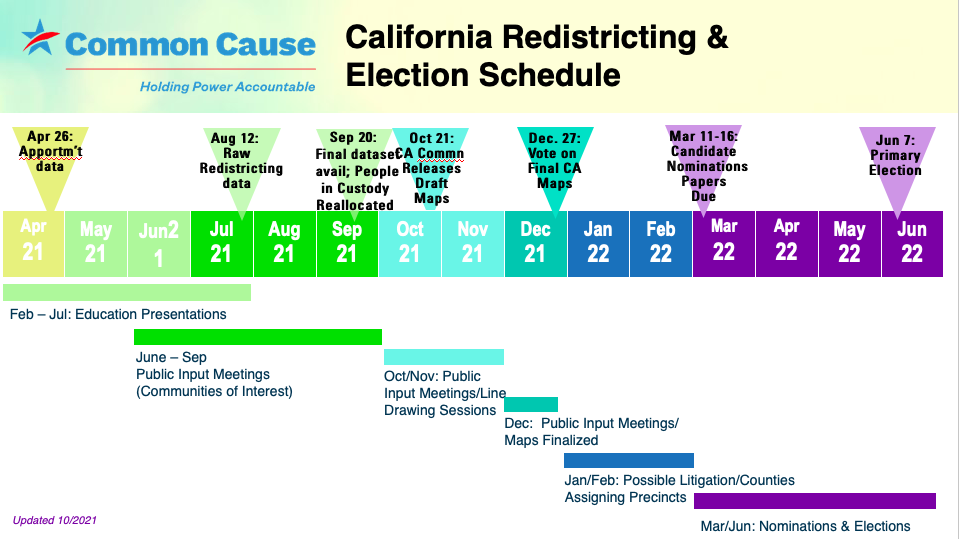Every ten years, California redraws its federal, state, and local legislative district maps. This process is meant to ensure that as populations grow and change, every Californian can have equal representation and equal voice in government.
We’re fighting for fair, transparent, and equitable redistricting at every level — advocating for legislation like the Freedom to Vote Act to help end partisan gerrymandering, bringing Californians to testify at public hearings, and telling our mapmakers the story of communities across California.
California State Legislative and Senate Districts
In California, both congressional and state legislative redistricting is controlled by an independent commission made up of citizens, not by the state legislature. This means that our mapmakers are more likely to base their maps on public input — not partisan ambition.
Statewide redistricting is controlled by a 14-member independent Citizens Redistricting Commission (CRC), consisting of five Democrats, five Republicans, and four people who are registered with neither of the two main parties. The CRC draws maps using public input and official Census data.
Certain areas also have their own independent commissions to manage redistricting within their city or county.
Mapping Criteria
Mapmakers must prioritize:
- Districts must comply with the provisions of the US Constitution and Voting Rights Act and keep districts reasonably equal in population.
- Keeping communities of interest and political subdivisions whole.
- Compactness
- Maximizing the number of politically competitive districts
- Nesting: where possible, CA Assembly and CA Senate districts must be nested, with two Assembly seats in each state Senate seat
Districts may not be drawn:
- To protect one or more incumbents, declared candidates, or political parties.
- With intent or effect of denial/abridgement of voting rights or vote dilution because of race or membership in a language minority group.
Why Redistricting Matters for California
When done fairly, redistricting is a chance for political power to be equitably distributed across different communities, making sure everyone has a seat at the table.
Unfortunately, redistricting has historically been conducted behind closed doors with little to no public input, meaning they don’t have an accurate picture of what our communities look like.
Even worse, when politicians have the power to draw electoral maps, they manipulate district lines to divide or pack together certain populations, keeping themselves and their party in power. It’s called gerrymandering – and it’s a major threat to our democracy.

Key Dates For California 2021 Redistricting
Hearings are held across California from May through September to take testimony from communities of interest. When the Commission receives the federal Census data, they use it in combination with public input to create draft maps.
From October through January, the Commission processes the data, displays draft maps, and holds hearings to get public feedback to revise the maps. After that, the maps are finalized and certified.
The CRC is holding hearings throughout September to discuss public input. Join us at one of the following times, or visit https://www.wedrawthelinesca.org/meetings for a full calendar of events!
Join us at an upcoming hearing in your area:
- 2020 Citizens Redistricting Commission Meeting: September 23 at 1:00 pm, agenda
- Legal Affairs Committee Meeting: September 27 at 9:00 am, agenda
- 2020 Citizens Redistricting Commission Meeting: September 28 at 11:00 am, agenda
- 2020 Citizens Redistricting Commission Meeting: September 29 at 9:30 am, agenda
To give testimony, please email VotersFirstAct@crc.ca.gov.
To submit Community of Interest testimony and map your community, please visit https://drawmycacommunity.org/.


California Redistricting Resources
Use these resources to learn more about how you can get involved in fighting for fair districts and stopping gerrymandering in Pennsylvania.